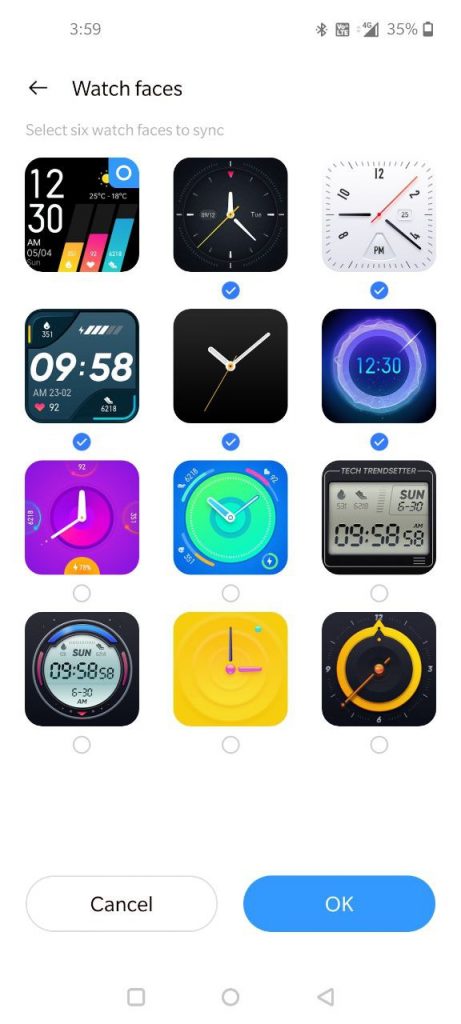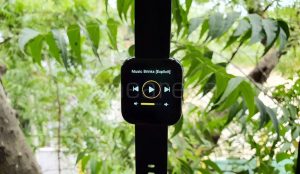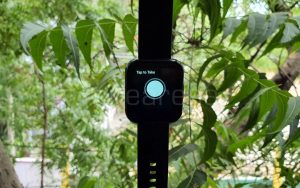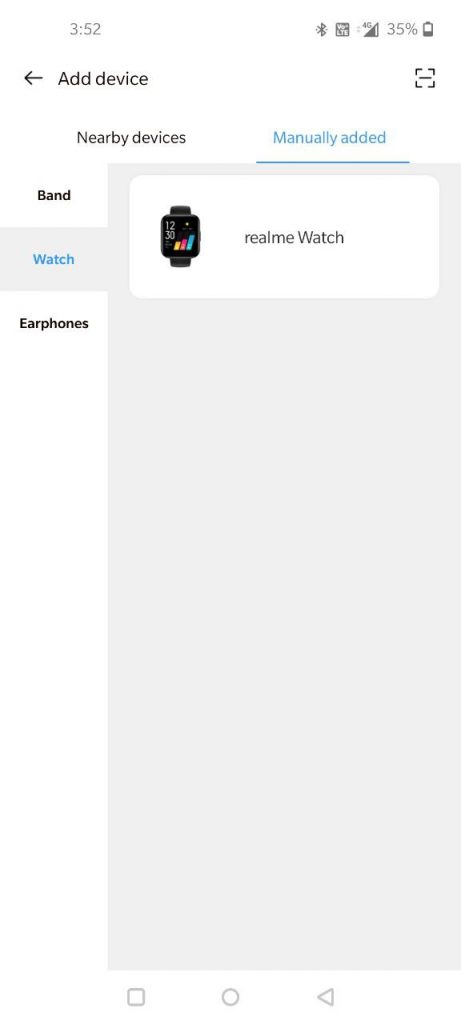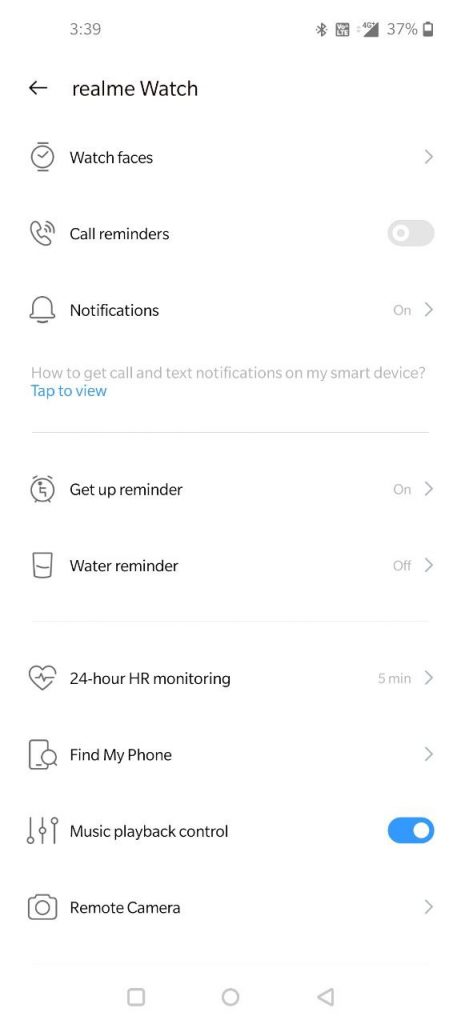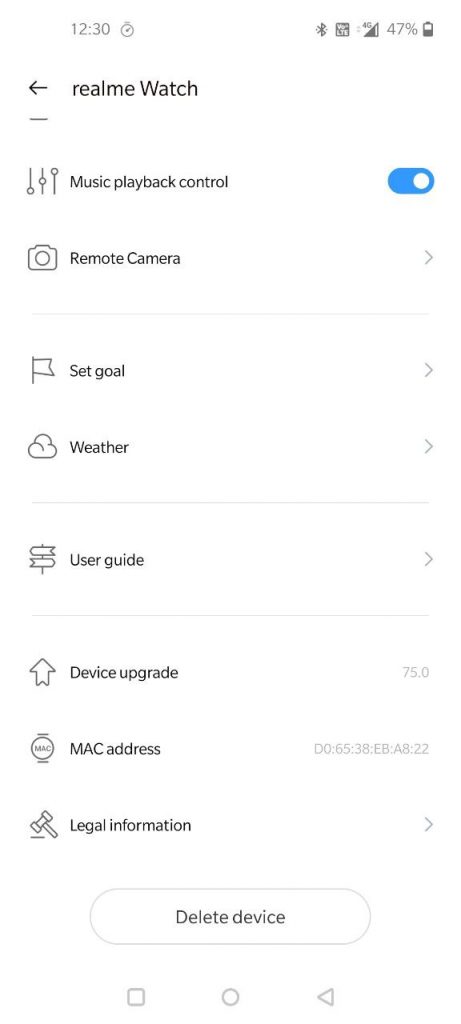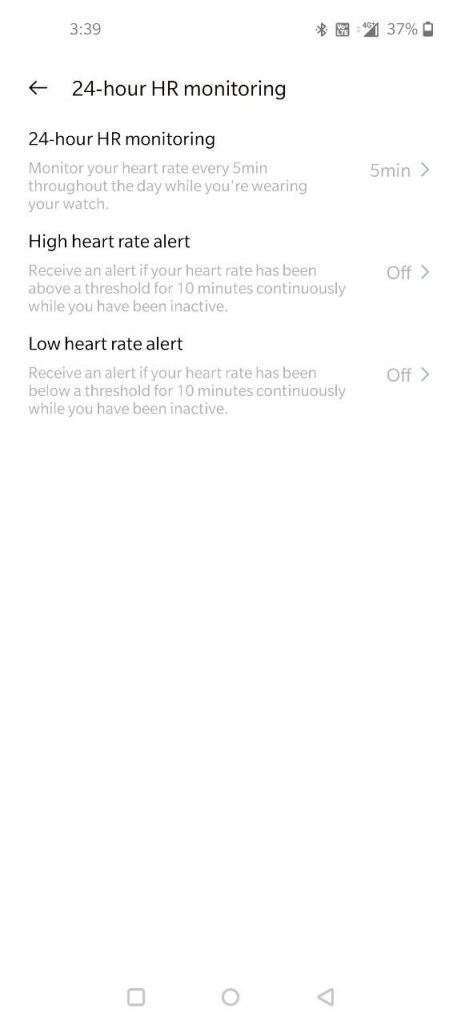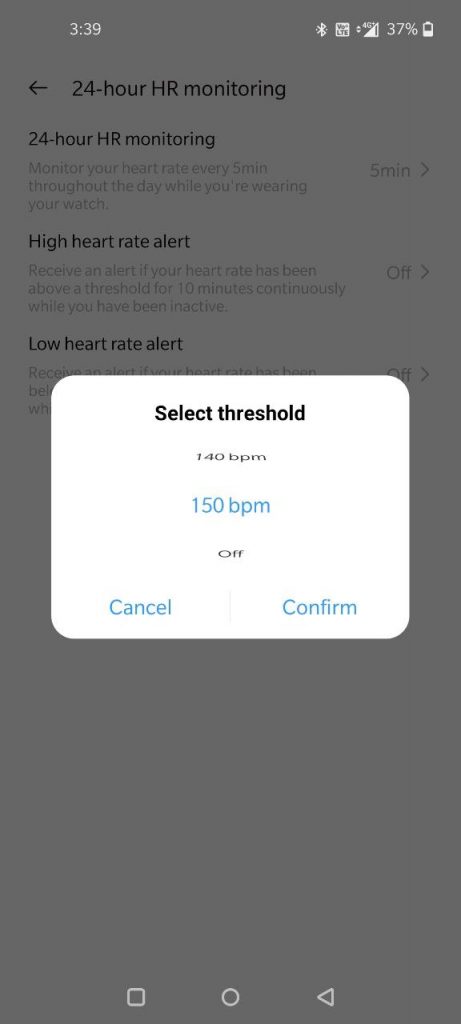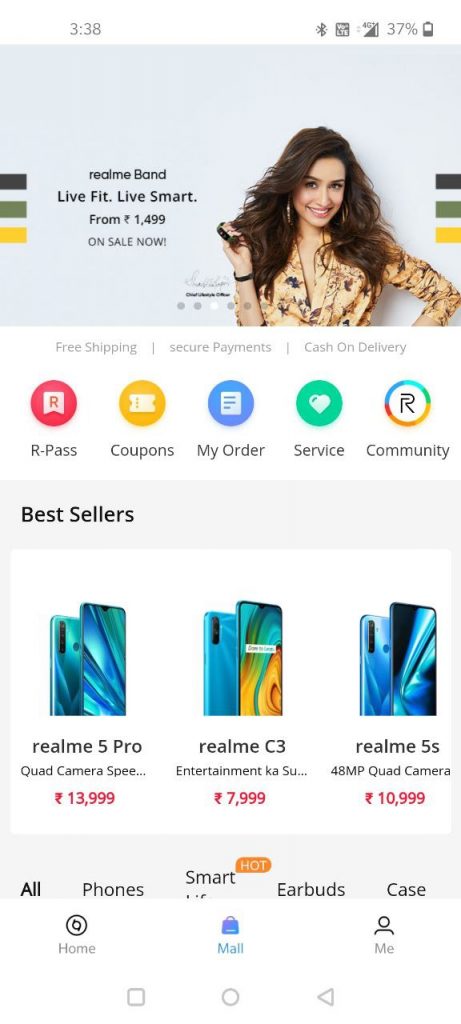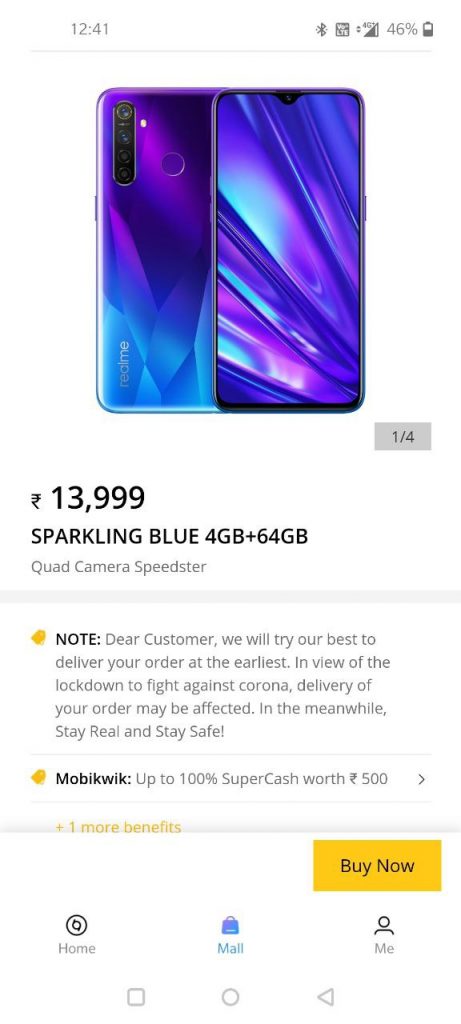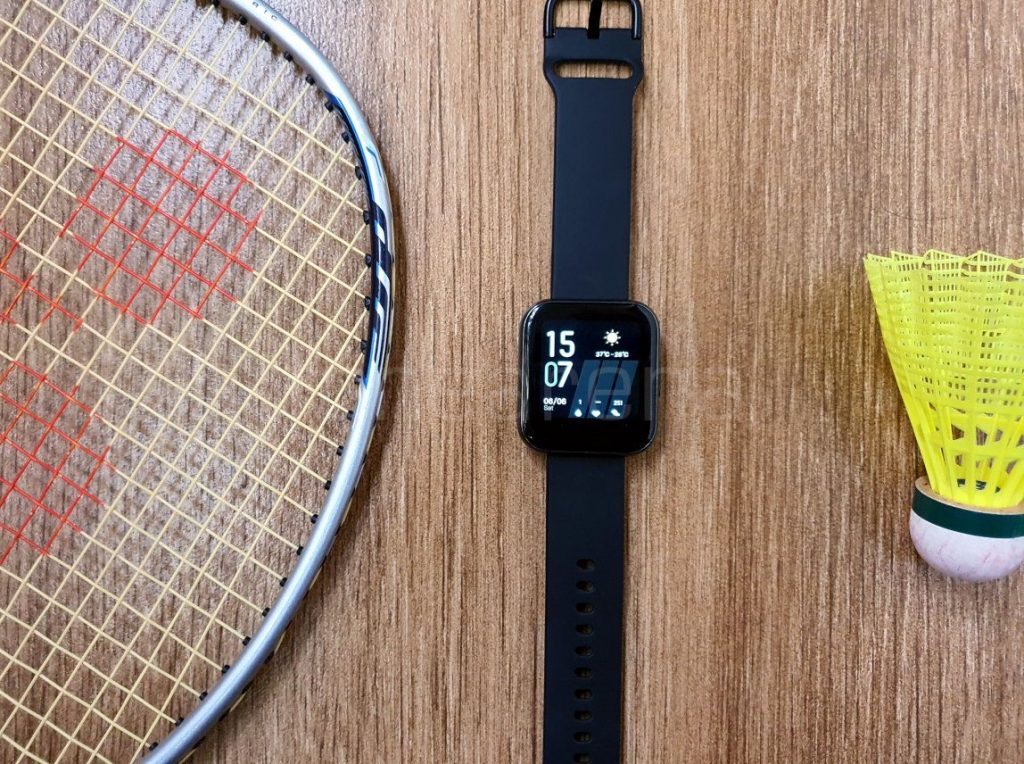
The growth trajectory of the Indian wearable market continues to soar, thanks to the cheaper offering from companies like Noise, Xiaomi, and realme, the latest company to join the bandwagon. In a launching spree, realme launched its first smartwatch in the Indian market with a 1.4-inch LCD screen, blood oxygen levels tracker, and more at Rs. 3,999. Is realme Watch worth its asking price? How much of a smartwatch experience does it deliver? Let’s find it out!
Design: Light weight, complex strap mechanism!

Just like any other budget smartwatch, the realme opts for a squarish module rather than a traditional circular dial. The Watch feels sturdy, fits well, and lightweight at 31 grams, thanks to polycarbonate build. Due to the lightweight body, you can wear the watch and sleep without any hand fatigue.
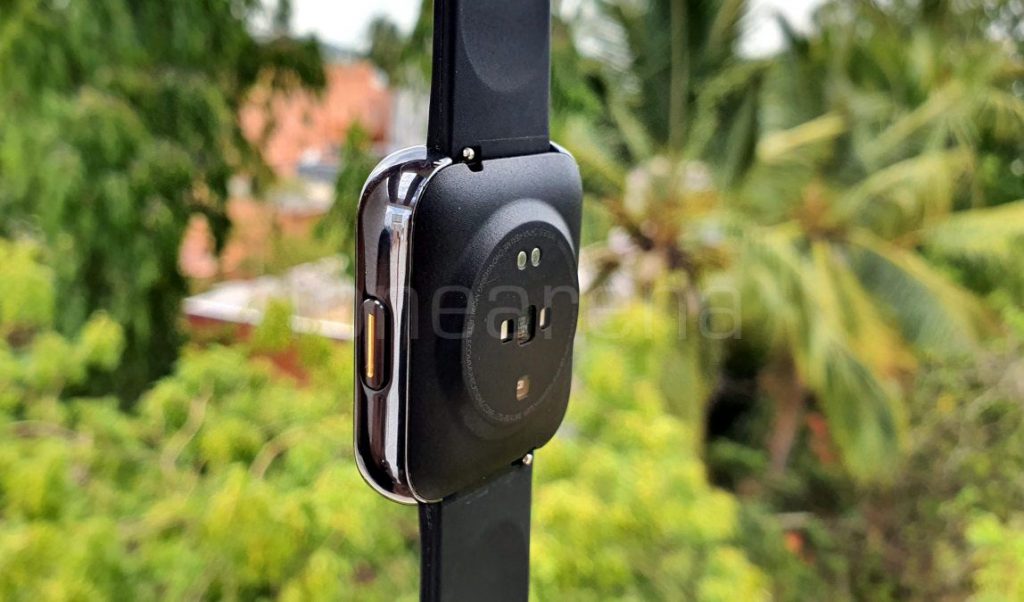
Notably, the side of the watch has a glossy frame with a single button embedded on the right side. To make the buttons more presentable, the company has made a thin yellow strike. The button can be used to wake/sleep the display and is used as a back button when using the watch. The feedback from the button is on point.
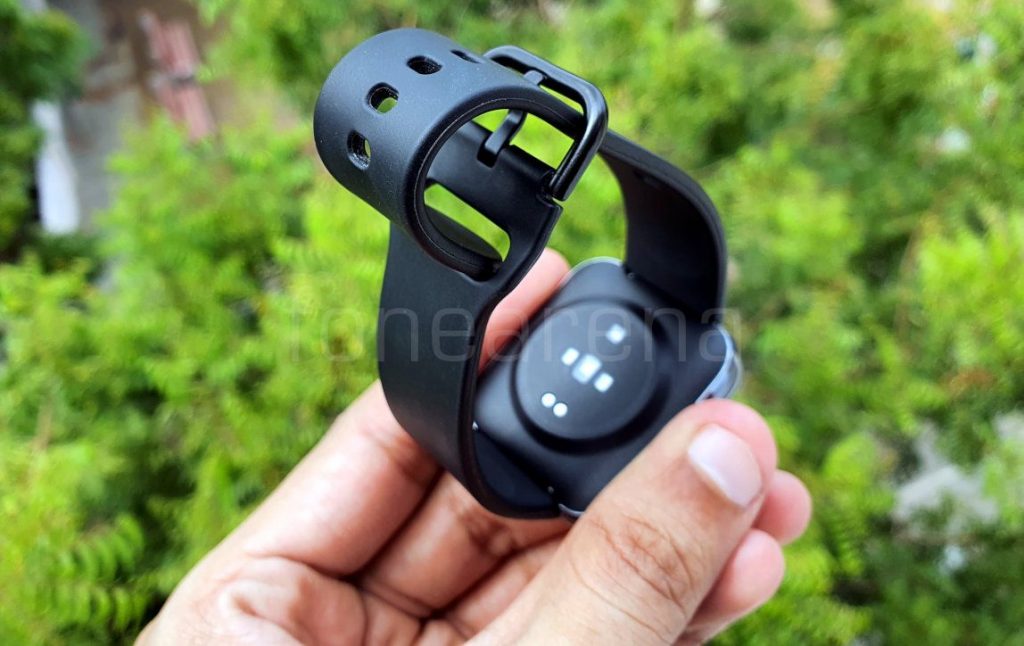
The quality of the strap is good, and we didn’t face any trouble or itching problems during usage. But again, the experience with the strap is cumbersome, due to the design especially if your hands are wet. Meaning the strap has to go inside after the metal hook. This forced me to wear the watch loose most of the time.
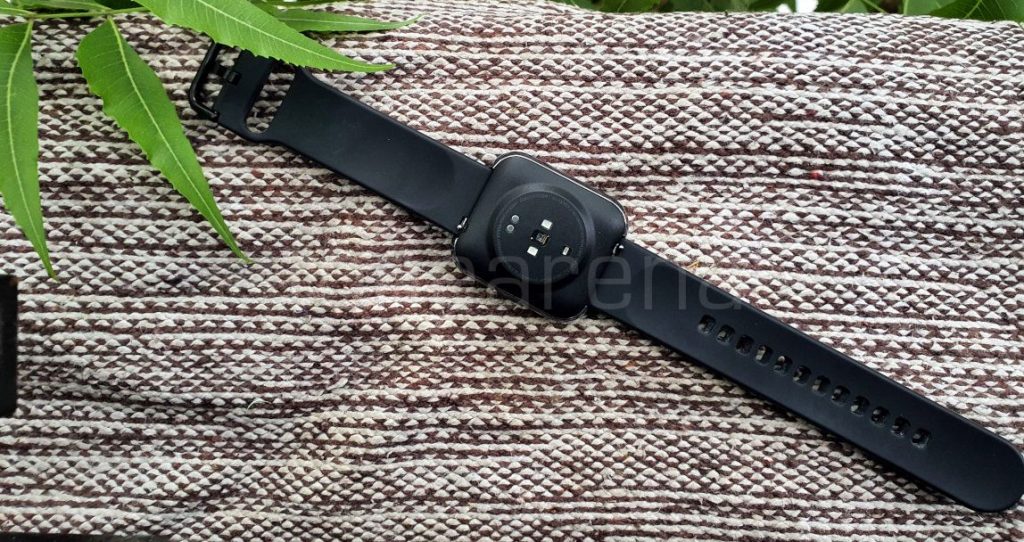
By default, it comes with a black strap, but if you are bored with the color, there are options available at Rs. 499 in blue, green, and red. The strap replacing mechanism is similar to other budget smartwatches at this price point. Turning back, we have the charging pins which will charge a 160mAh battery, a SpO2 sensor, and a heart rate sensor.
Display: 1.4-inch display with 323PPI
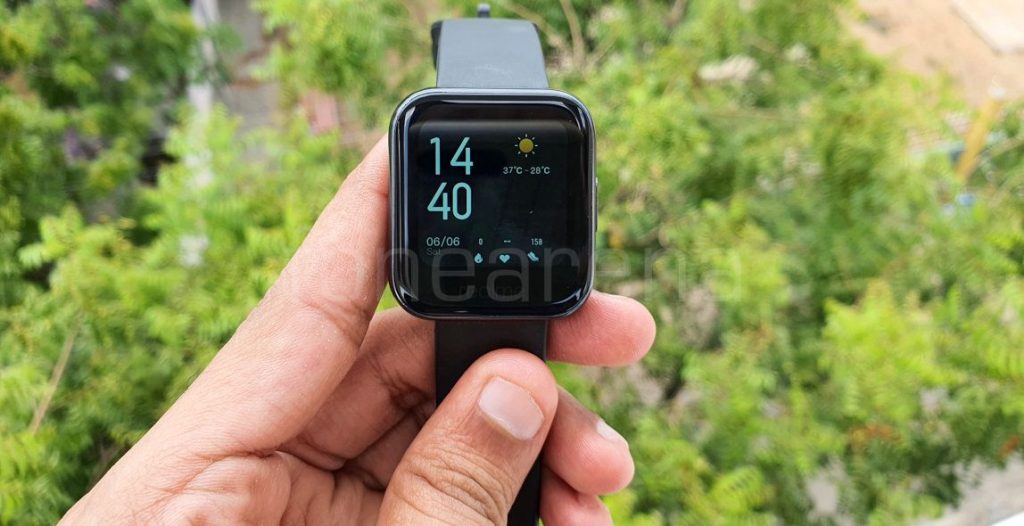
During the launch event, realme emphasised more on the 1.4-inch (320×320 pixels) 323 PPI touch color LCD screen. It has 2.5D Corning Gorilla Glass 3 for protection against scratches. The display has a thicker bezel around it, which is an eyesore. Also, it has a realme branding etched on it, which is barely visible. The company’s idea to implement a thick bezel for its ‘even barely visible logo’ is unclear and makes it look somewhat ugly as well.
Talking about the display, it is sharp, vibrant and has decent sunlight legibility at 380 nits. The brightness can be adjusted on the scale of percentage from 10% to 100%. To turn off the display, you need to press the button instead of covering it with the palm, like Samsung’s smartwatches.
During my usage, the UI feels a bit laggy at times and was not as smooth as I expected. The realme Watch by default comes with 12 watch faces, out of which just 6 can be stored in the watch. The selection of watch faces can be done through the realme Link app. In my opinion, none of the watch faces look impressive and I chose the default one. If you want to change the watch faces, just touch and hold the display for a second upon which you can choose your watch faces. The company also said it is working on bringing more watch faces in the future. The vibration motor in realme Watch gets the job done be it notification or waking you up from the deep sleep in the morning.
Performance: Works fine, but…!
The realme Watch comes with 15 sport tracking modes – outdoor running, walking, swimming, indoor running, outdoor riding, aerobic capacity, strength training, football, basketball, badminton, table tennis, indoor riding, yoga, elliptical machine, and cricket.
Other basic functions include step counting, heart rate monitoring, date and time functions, weather information, Meditation, music controls, stopwatch, alarm functions, and Find My Phone function.
Talking about the performance, the realme Watch works just fine when it comes to tracking sleep and step count. Even though the accuracy is not up to the mark, the error margin is somewhat acceptable. In terms of sports activity, there is no sport-centric data as such apart from calories, heartbeat, and duration. It doesn’t make any sense as to why they even added these in the first place. It also lacks GPS support, but it can latch on to the GPS in seconds once you link with the smartphone for your runs.
Next up, it doesn’t have an option for regular exercise, for example, say stretching, warm-up, or other ordinary exercises (no equipment) which can be done at home. Most of the time, I used either Aerobic or Strength training to map my workout data. The workout data can be linked with a third-party app like Google Fit, definitely a great move! I would like to see more third party support like Strava or Endomondo. At the time of writing this review, there is no dedicated app for iPhone users, which means iOS users cannot use the watch as of now.
The option to control the camera and music through the watch works perfectly fine. However, the options need to be turned on. It’s worth mentioning here that the music control becomes useless once you start a workout. Hope realme finds a solution to switch between two actions.
The Meditation feature is a good addition, but the maximum time limit before it alerts you goes up to just 10 minutes. Even though it’s good for starters, I am forced to use my smartphone over this watch since my session goes up to 45 minutes.
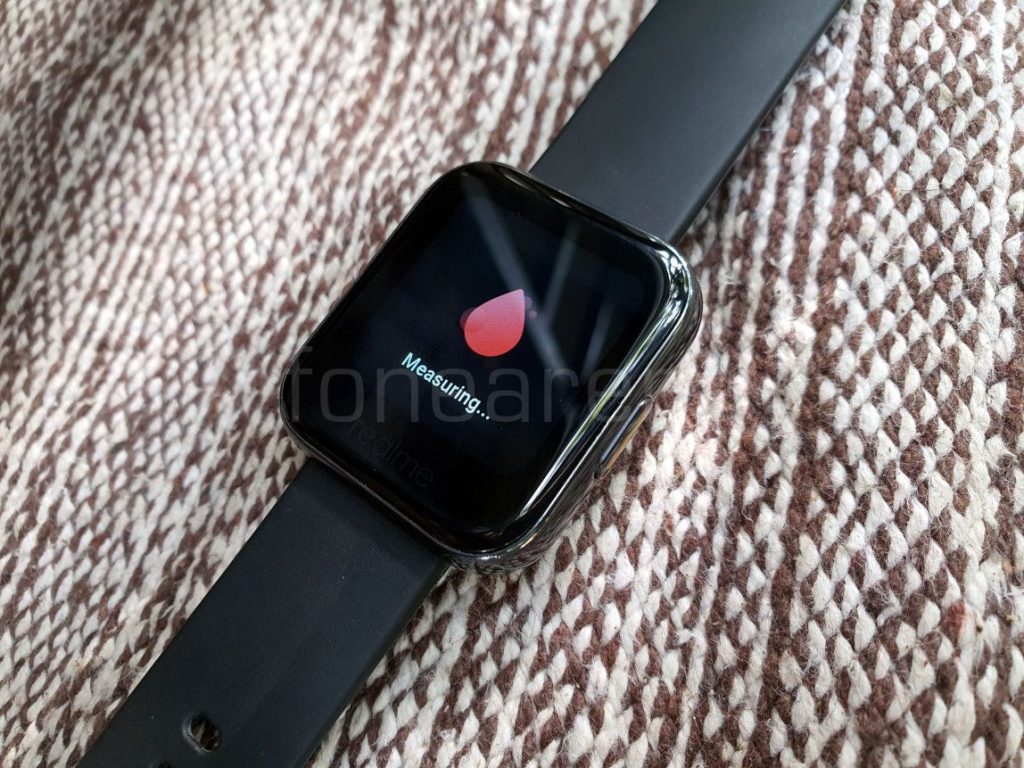
The realme Watch can measure the blood oxygen levels or the saturation of oxygen in your blood through the SpO2 sensor (emits red light). In the medical field, it is measured with Pulse Oximeters which resembles a clip. It is then attached to toes or fingers to measure the blood oxygen levels.
In this case, if you tap on SpO2, two led lights with different wavelengths – Red and Infrared pass through the skin to measure the level of oxygen. It is important to know that the absorption of light differs between oxygenated and deoxygenated blood, meaning, the blood with normal levels of oxygen absorbs more infrared light, while the other case allows more of it to pass through it. This allows the sensor to measure oxygen levels quickly and painlessly.
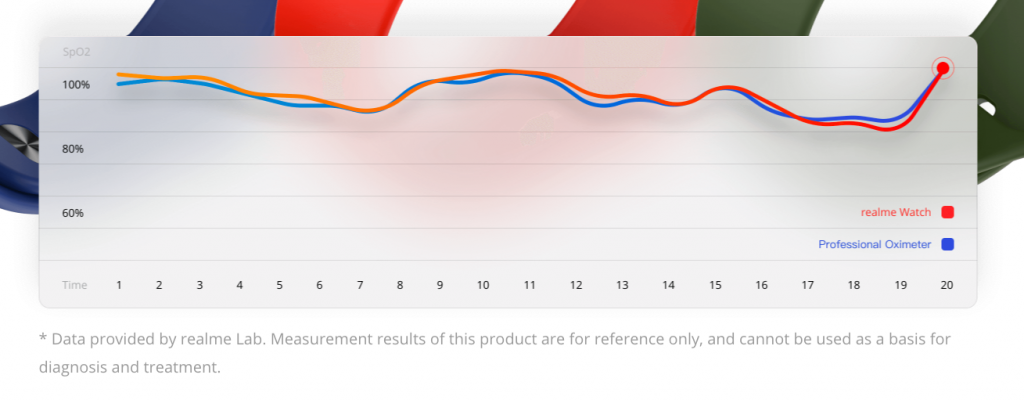
Most of the time, on average it shows 97 to 98%, which means I am normal and healthy. Well, talking about the accuracy, it’s a whole different point. To give us an idea, realme on their website has posted a comparison between the realme Watch and Professional Oximeter. They also mentioned the following “Data provided by realme Lab. Measurement results of this product are for reference only, and cannot be used as a basis for diagnosis and treatment.”
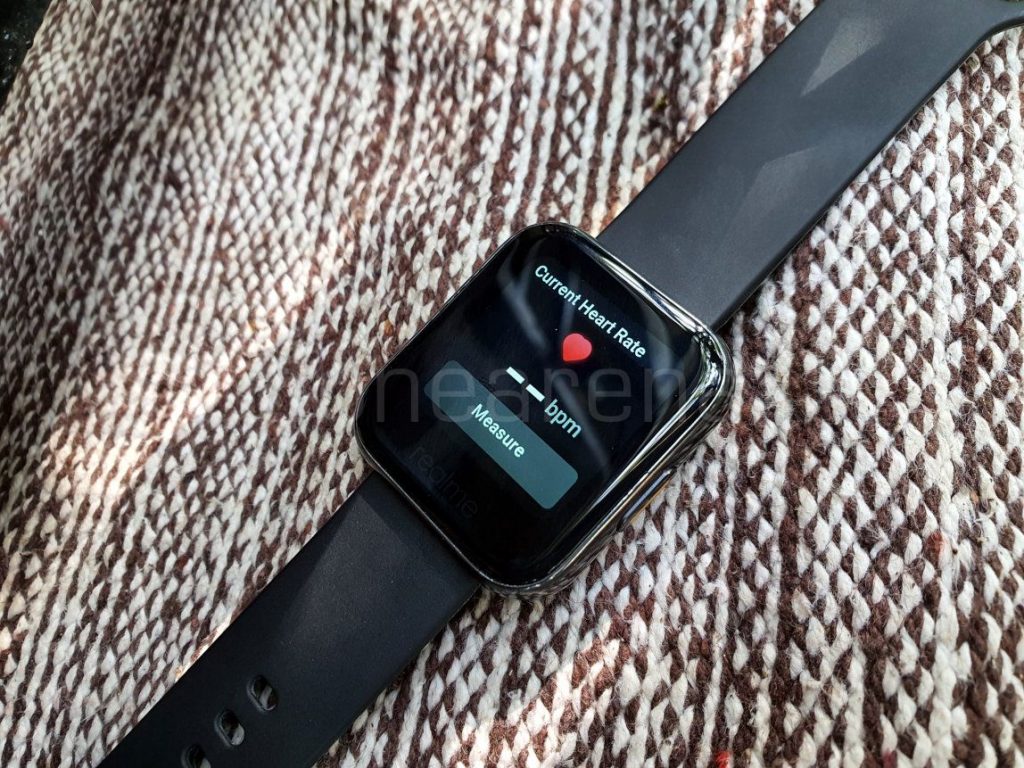
Coming to heart rate monitoring, the realme Watch also uses photoplethysmography (PPG), which projects green light on the skin like any other fitness band/smartwatches. It takes somewhere around 25 to 30 seconds to show the final value.
So overall, is this any good? Let’s get it straight at the conclusion!
realme Link app: Clean UI, much-needed features
To use this Watch, it is important to connect with the realme Link app. Setting up the watch is simple and straightforward. The app’s UI looks clean and readable. The app’s home screen consists of information options to add devices (Band, Watch, and Earphones), the status of paired devices if any, and two tabs at the bottom (Mall and Me).
To access the data or customise your device settings, tap on the device (realme Watch in this case). On the main screen, we have the basic data including steps, sleep, heart rate, SpO2 levels, and exercise logs. On top, we have a small tab that shows the battery status, connection status, and the settings option.
Once you go into the settings, you have a range of options including Watch Faces, Call reminders, Notifications (Shows messages only when the screen is off), Get up reminder, Water reminder, and more as you can see on the image.
The heart rate monitoring option lets you choose the time – 5 min, 10 min, 20 min, 30 mins, in case if you want to monitor continuously on successive intervals. If not, you can turn it off as well. On top of that, there are ‘High heart rate alert’ and ‘Low heart rate alert’. Other options including, Find My phones, Music playback, Remote control, Set goal, and weather options are available.
Under the ‘Mall’ tab, you get to buy all the realme devices seamlessly just like Flipkart or Amazon. The ‘Me’ includes the basic information of user – DOB, Sex, Height, Weight, and profile photo.
Battery: Good one
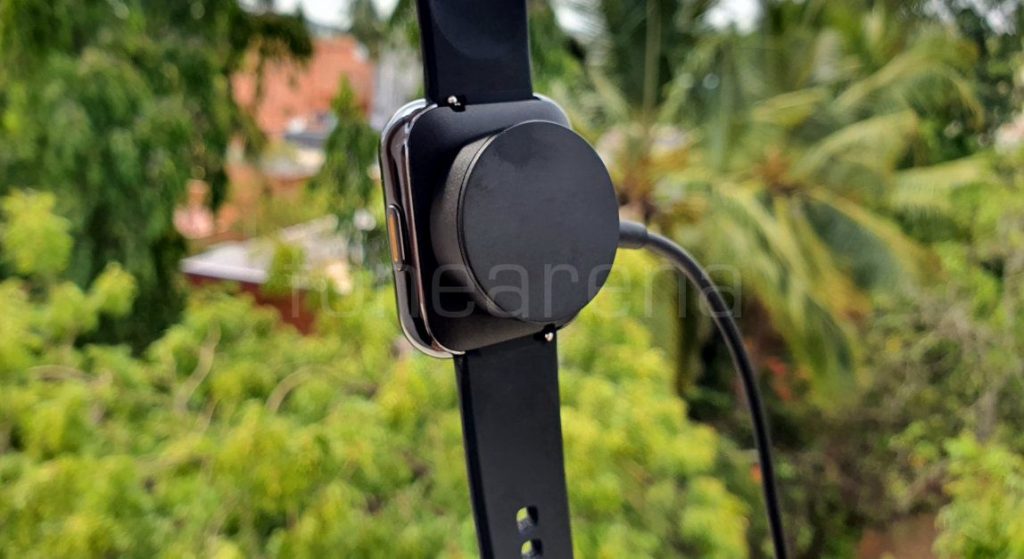
The realme Watch is powered by a 160mAh battery. As per the company claims, the device offers 7 days battery life with heart rate monitor on, 9 days with a heart rate monitor off, 20 days on power-saving mode. In my brief usage (around 7 to 8 days), the charge dropped from 100% to 22% with a heart rate monitor off. Undoubtedly, the battery life is impressive on this device. Notably, charging from 0 to 100% takes more than 1 and a half hours.
Conclusion: Decide for yourselves!
Overall, if you are not concerned about the accuracy (the error margin is acceptable though) realme Watch is a very good option at this price point. Feature-wise, the realme Watch brings a lot to the table including big display, IP68 certification, SpO2 monitor, camera/music control, and better battery life. On the other side, it also lacks GPS, has a cumbersome strap mechanism, and no sport-centric data for sports activities.
If you are looking out for a fitness tracker with a smartwatch experience, realme Watch at Rs. 3,999 is a good deal. At Rs.1,000 extra, we have the Amazfit Bip S with better accuracy, built-in GPS, and other impressive features, but its display is not as crisp as the realme Watch. In case of just fitness tracking, we have options including Mi Band 4 and Honor Band 5.
The realme Watch is available on Flipkart and realme.com. The Fashion straps will be available later at Rs. 499.


